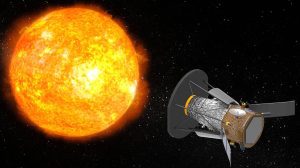What Is a Nano Satellite?
A nano satellite is a small satellite typically weighing between 1 and 10 kilograms. These satellites are designed to perform a range of functions, from Earth observation to communication and scientific experimentation. Due to their compact size and lightweight design, nano satellites offer a cost-effective solution for space missions that previously required much larger satellites.

Understanding Nano Satellite Orbit
Nano satellites are often deployed into various types of orbits based on their mission objectives. The specific orbit selected determines the satellite’s coverage area, mission duration, and the type of data it can collect. Several types of orbits are commonly used for nano satellites:
1. Low Earth Orbit (LEO)
Low Earth Orbit (LEO) is the most popular choice for nano satellites. These orbits typically range from 160 to 2,000 kilometers above Earth’s surface. LEO offers several advantages for nano satellites, including:
- Shorter Communication Delays: Because of the proximity to Earth, nano satellites in LEO experience minimal communication delays, making them ideal for real-time applications like Earth observation and communications.
- Frequent Passes Over Target Areas: LEO satellites can provide frequent passes over specific geographic locations, which is especially useful for monitoring environmental changes or collecting data on specific regions.
2. Medium Earth Orbit (MEO)
Medium Earth Orbit (MEO) is typically located between 2,000 and 35,786 kilometers above Earth’s surface. MEO is often used for navigation satellites, such as those in the GPS constellation. While less common for nano satellites, MEO provides:
- Broader Coverage Areas: MEO satellites have a broader coverage area compared to LEO satellites, which can be beneficial for communication networks or global positioning systems.
- Longer Operational Lifespan: Nano satellites in MEO tend to have longer operational lifespans because they are farther from Earth’s atmosphere, reducing drag and fuel consumption.
3. Geostationary Orbit (GEO)
Geostationary Orbit (GEO) is positioned at approximately 35,786 kilometers above the Earth’s equator, where satellites match Earth’s rotational speed. Although GEO is typically reserved for larger satellites due to the distance and power requirements, there are emerging opportunities for nano satellites to operate in GEO for specific communication purposes.
- Constant Coverage of a Fixed Area: Nano satellites in GEO can offer continuous coverage of a specific region on Earth, which is ideal for applications requiring constant monitoring.
- Challenges of Power and Size: Due to the high altitude, nano satellites in GEO need robust power systems, and the smaller size of nano satellites presents challenges in maintaining constant communication.
Benefits of Choosing the Right Nano Satellite Orbit
1. Cost-Effective Missions
One of the primary reasons nano satellites are gaining popularity is their cost-effectiveness. By selecting the appropriate orbit, these small satellites can achieve mission objectives without the high launch and operational costs associated with larger satellites. Lower orbital altitudes, such as those in LEO, allow nano satellites to launch more affordably while providing valuable data.
2. Enhanced Mission Flexibility
Nano satellites offer flexibility in terms of their orbits and deployment. Depending on the mission’s needs, they can be launched into different orbits, allowing for customized solutions for everything from global communications to targeted scientific research.
3. Shorter Development and Launch Timelines
Due to their smaller size and lower weight, nano satellites can be developed and launched in a much shorter time frame compared to traditional satellites. This is especially important for missions that require quick turnaround, such as monitoring natural disasters or conducting time-sensitive research.
Challenges of Nano Satellite Orbits
While nano satellites offer numerous advantages, selecting the optimal orbit comes with its own set of challenges:
1. Limited Payload Capacity
Because nano satellites are small, they have limited payload capacity, which can constrain the types of instruments they can carry. This is especially critical when selecting an orbit, as some missions may require specific payloads that can only function optimally in certain orbital conditions.
2. Orbital Decay and Longevity
Nano satellites in lower orbits, such as LEO, experience atmospheric drag, which can lead to orbital decay over time. As the satellite’s altitude decreases, its operational life can be significantly shortened. To mitigate this, satellite designers must carefully plan for propulsion systems or de-orbit strategies.
3. Communication and Data Transfer Limitations
Nano satellites, particularly those in lower orbits, may face communication challenges due to their small size and the speed at which they orbit. Establishing reliable communication channels for continuous data transfer can be more complex compared to larger satellites, requiring sophisticated onboard systems.
Applications of Nano Satellites in Different Orbits
1. Earth Observation
Nano satellites in LEO are ideal for Earth observation tasks, such as monitoring climate change, urban development, and natural disasters. These satellites can provide detailed imagery and frequent updates, which is invaluable for both scientific research and humanitarian efforts.
2. Communications and IoT Networks
For communication purposes, nano satellites in LEO and MEO are increasingly being used to establish global networks for Internet of Things (IoT) applications. These satellites can provide low-latency connections for remote areas where terrestrial infrastructure is lacking.
3. Space Research
Nano satellites are also used in space research, testing new technologies or conducting scientific experiments. In orbits such as LEO or MEO, nano satellites can gather data on the space environment, including radiation levels, cosmic phenomena, and more.
Curious about the latest advancements in nano satellite technology and orbital deployment?
Click here for more insights on nano satellite missions and their role in modern space exploration.
